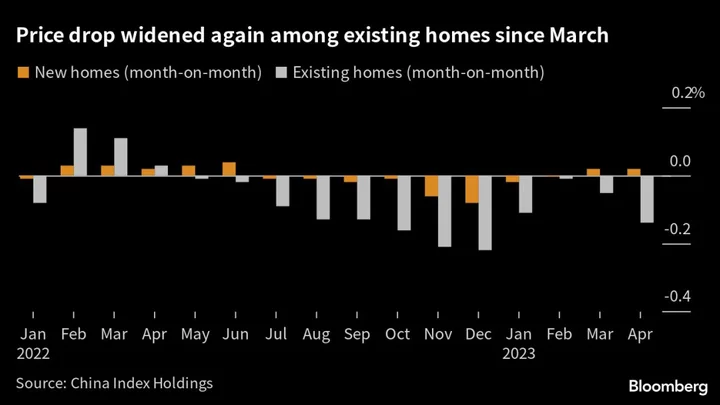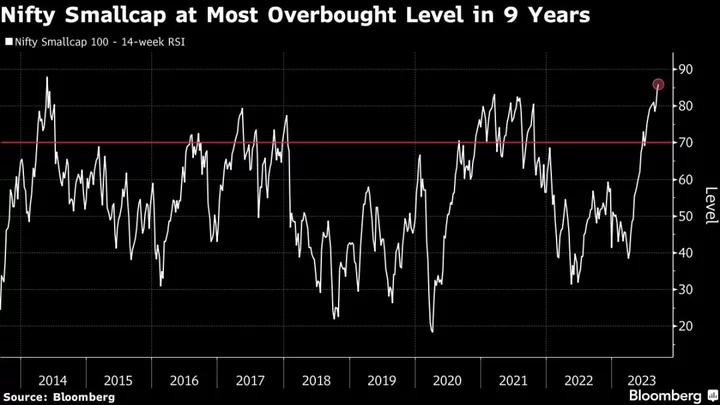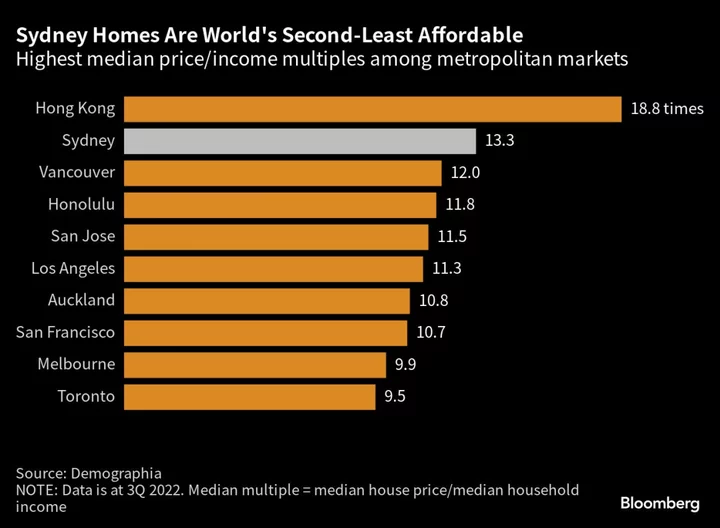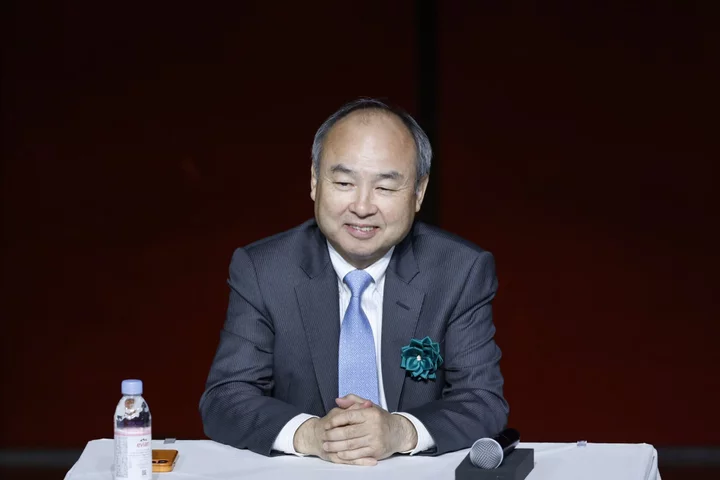China’s credit demand improved, deflationary pressures eased and the yuan rallied, adding to a recent trickle of signs that the economy and financial markets may be stabilizing after a sharp downturn.
The strong credit data published Monday showed recent steps to bolster the real estate market may be starting to lift household demand for mortgages, while corporate loans also picked up. The yuan gained after the central bank escalated its defense of the currency.
Those add to the encouraging signs from the weekend, with consumer prices returning to gains after a drop in July — albeit by the slimmest of margins. Factory-gate deflation also narrowed.
“The policy measures helped the economy to stabilize,” said Zhang Zhiwei, chief economist at Pinpoint Asset Management Ltd. “The key question is to what extent the economic momentum can be sustained.”
The world’s second-largest economy is trying to regain traction as an ongoing property crisis and weak confidence drag on its recovery, creating risk for the government’s annual growth target of about 5%. The improvement in the August data suggests July’s grim figures — which showed consumer prices tipping into deflation and monthly loans plunging to a 14-year low — may have been the worst of the slump.
The benchmark CSI 300 Index rose 0.7% on Monday, snapping a four-session losing streak. The yuan also rallied after falling to its weakest since 2007 against the dollar last week as the People’s Bank of China issued forceful guidance and stressed its confidence in keeping the yuan stable.
The government’s supportive efforts — including cuts to policy loan rates, mortgage rates and down-payment requirements for home purchases — are likely helping the recovery somewhat. Goldman Sachs Group Inc. economists estimate the policy measures announced so far had a total impact equal to about 60 basis points, or 0.6%, of gross domestic product.
Now the question is whether China’s property sector is capable of definitively turning a corner and lifting overall confidence in the economy.
Recent policies “may generate a short-term rebound in property transactions, but are insufficient to stabilize the property market,” the Goldman analysts wrote in a Sunday research note. They expect more easing, including interest rate cuts or measures to support the property market, if home sales continue to slide and growth slows further.
What Bloomberg Economics Says ...
“August’s stronger-than-expected credit suggests China’s monetary and fiscal stimulus may be starting to gain traction. But declines in long-term borrowing by business and households show private-sector demand has yet to rebound, despite signs of bottoming in purchasing managers surveys and trade.”
— Eric Zhu, economist
Read the full report here.
While new household mid- and long-term loans, a proxy for mortgages, expanded after a contraction in July, they remain far below the levels recorded in August 2022, along with those seen pre-pandemic.
The improvement to aggregate financing relied to a large extent on the issuance of special local government bonds, according to Ming Ming, chief economist at Citic Securities Co.
Local governments ramped up borrowing in August to lift spending on infrastructure projects. While that can help economic growth, it also potentially pressures financial markets and may spur more monetary policy easing.
There are also signs that services growth is waning after being a major driver of the economic recovery earlier this year. That suggests more policy support may be needed to bolster household spending.
Deflationary pressures aren’t gone entirely, either: The consumer price index remains well below the government’s official target of around 3% for the year.
Market analysts were also cautious. While the PBOC’s remarks on Monday to defend the yuan suggested it’s “unlikely to stay on the sidelines,” more may be needed to keep sentiment on the upswing, according to Alex Loo, macro strategist at TD Securities.
“Without more notable fiscal support from authorities, it is unlikely to mark a turnaround in the yuan and the rally could prove short-lived,” he said.
Beijing has taken a series of measures since late July to restore market confidence, but the efforts have so far failed to spur a sustainable rebound in the stock market. A brutal selloff in August saw key local indexes rank among the world’s worst performers.
The CSI 300 remains down about 10% from the January high this year. Global funds, meanwhile, are holding the least Chinese stock positions since October — or back to where it was before the reopening rally took off in late 2022, according to a Morgan Stanley quant analysis last week.
Chinese credit markets are still grappling with record defaults as the fallout from the property debt crisis spreads. Average prices of Chinese dollar junk bonds, most of which were issued by developers, have tumbled to about 67 cents from about 98 cents two years ago, according to a Bloomberg index.
While they have risen from a low for 2023 marked last month under 65 cents on hopes for further supportive steps for the real estate sector, they are still at levels considered distressed.
“These are marginal positives and not game changers,” Willer Chen, senior analyst at Forsyth Barr Asia Ltd., said of Monday’s financial market gains. “It remains to be seen how long this rally is going to last.”
--With assistance from Wenjin Lv and Zhu Lin.
(Updates with additional lines on credit data, market moves and analyst reaction.)









